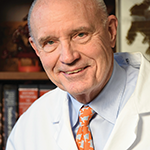Insights into Ankylosing Spondylitis
Eric Gapud, MD, a rheumatologist in Silver Spring, Md., who sees patients through the Vasculitis Translational Research Program at NIAMS/NIH, did not know when he started medical school that, in addition to studying disease, he would experience it himself. At age 22, he began to have episodes of recurrent uveitis. This led to genetic testing showing that he is positive for HLA-B27; he was subsequently referred to a rheumatologist. Only then did Eric realize that the back pain and limited range of motion in his neck, which he had experienced since age 13, were actually telltale signs of the condition with which he was diagnosed: ankylosing spondylitis.
Now, years later, Dr. Gapud recalls the saga as “a humbling experience.” He had been so excited to start medical school and embark on his career as a physician while meeting new friends and forming unique social networks. Instead, he was grappling with the implications of a diagnosis that he did not yet understand and felt, in many ways, isolated him from his classmates. He was at a loss for how to deal with this new part of his life.
Treatment began with high-dose glucocorticoids, which caused many unwanted side effects. “I had never been on any medications before,” he explains, “and I was frustrated by my situation.”
Not long after his diagnosis, etanercept became the first biologic medication approved for the treatment of ankylosing spondylitis. The availability of this biologic medication was at once reason for optimism and cause for potential concern. “I was scared by the idea of starting a medication that was so new to market,” he notes. Ultimately, he began this treatment and did see improvement in his back pain symptoms. The uveitis improved as well, although it continues to be an episodic issue.
Dr. Gapud can now appreciate that, although living with ankylosing spondylitis can be challenging, having this disease can also serve as an asset when he approaches the care of patients. His experience allowed him to reflect on what it means for a patient to be dealing with a new diagnosis: There is a whole new language to be learned. They must become adept at explaining their symptoms in ways that their doctor can comprehend, and they have to learn to adjust their expectations to what is reasonable and possible.
1. Make sure each patient knows they are the most important person in the room, whether they are alone or with family and friends.



